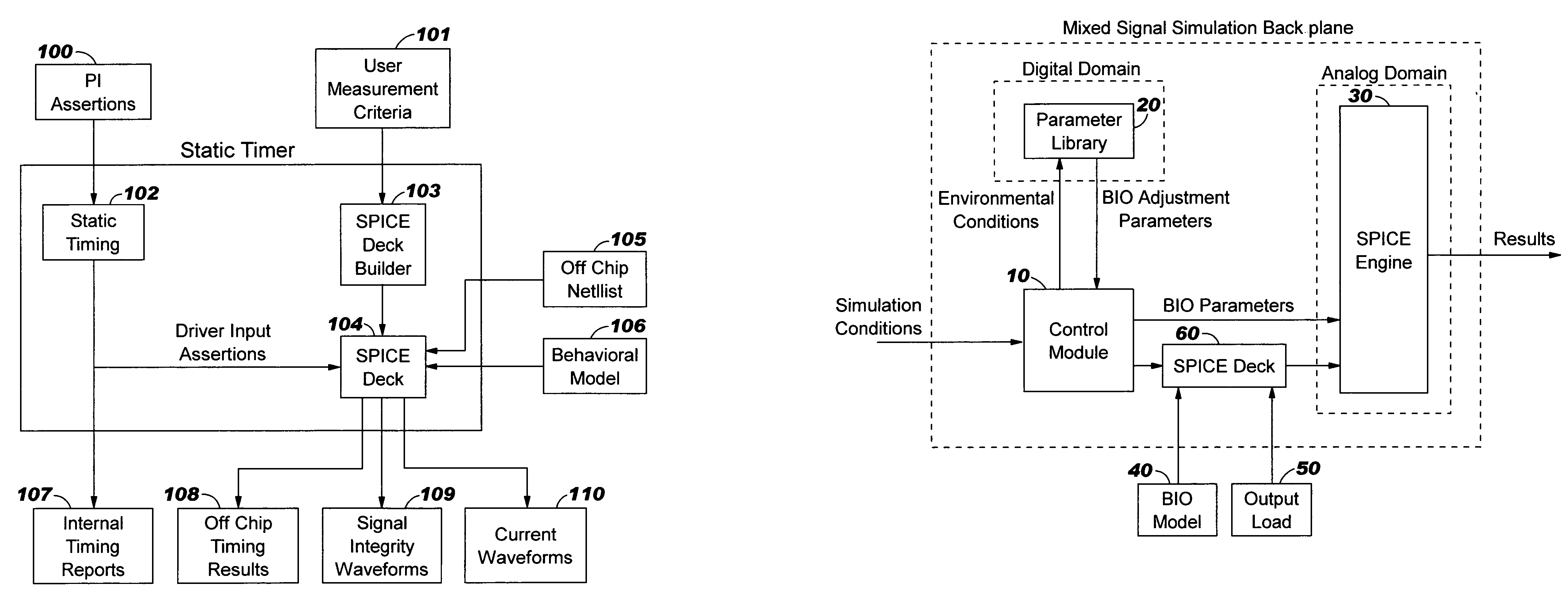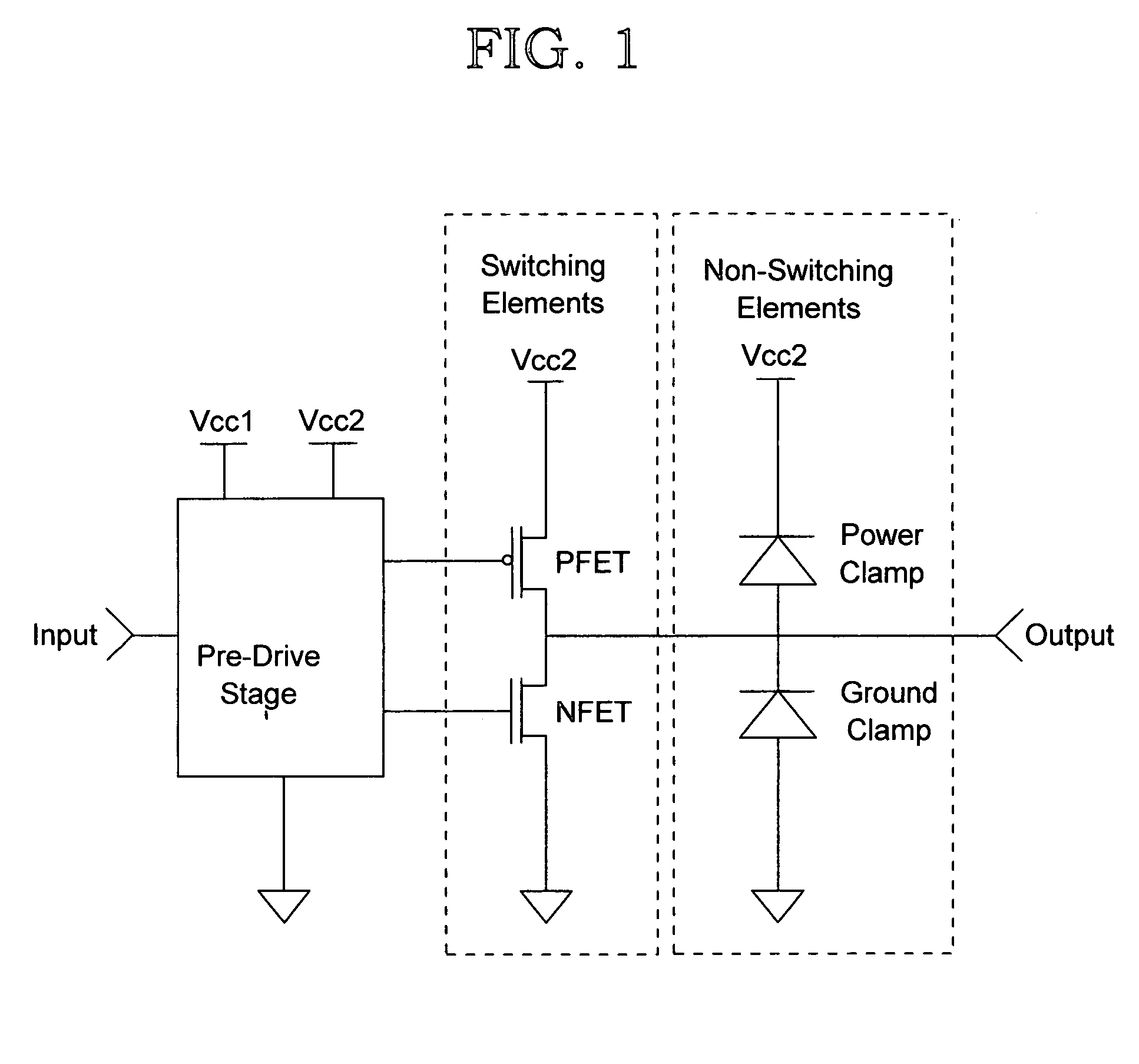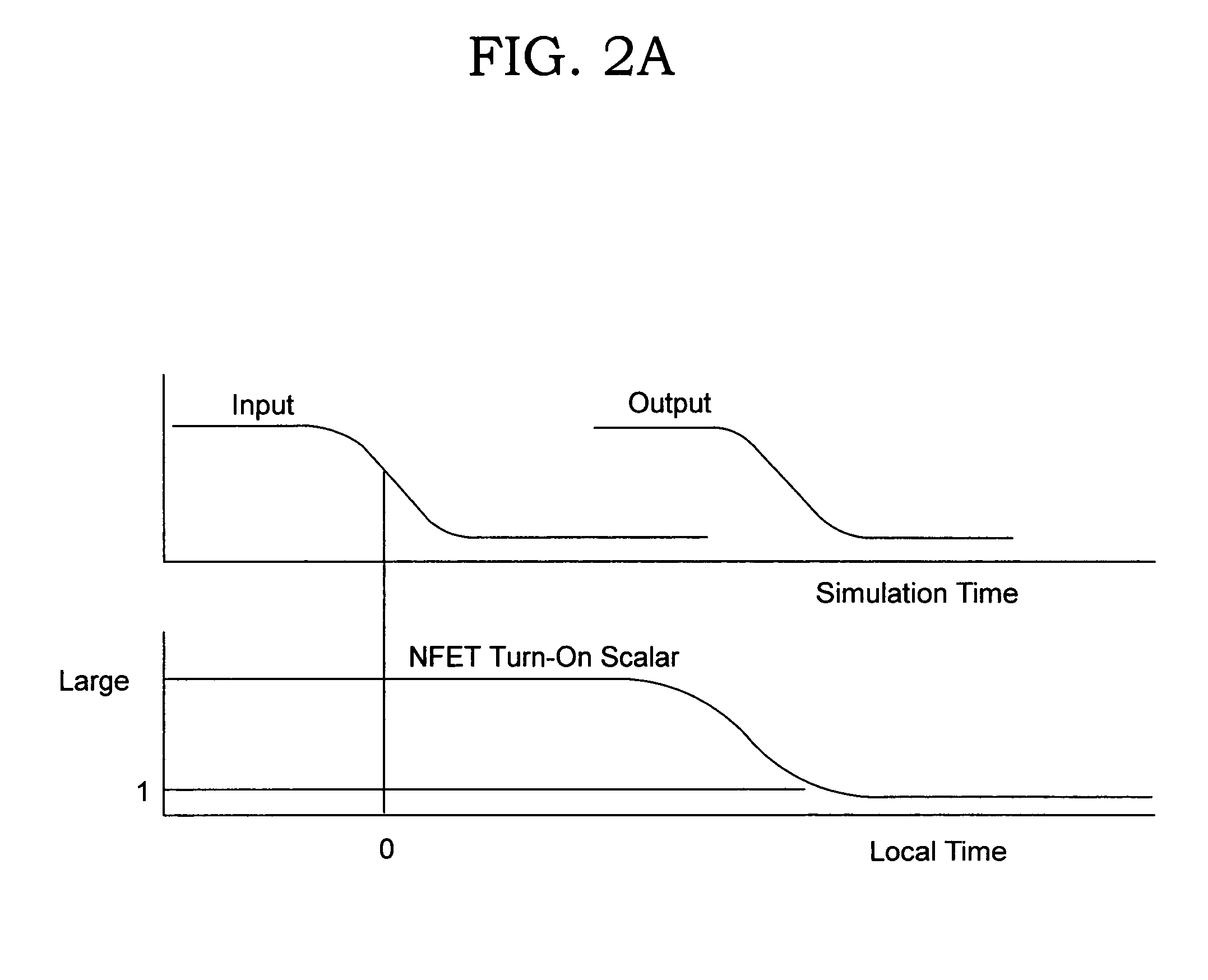Circuit and method for modeling I/O
a technology applied in the field of circuits and methods for modeling i/o, can solve the problems of pre-drive currents, delay of drivers, and no techniques are available to the ibis model developer to account, and achieve the effect of limiting the cross sectional siz
- Summary
- Abstract
- Description
- Claims
- Application Information
AI Technical Summary
Benefits of technology
Problems solved by technology
Method used
Image
Examples
Embodiment Construction
[0029]The output characteristics of a typical driver are represented by two basic element types: switching and non-switching. Switching elements are functions of both time-varying and non-time-varying parameters, and non-switching elements are functions of non-time-varying parameters only. Examples of switching elements are nfets and pfets. Typically, a switching element is used to represent the composite transient impedance (conductance) behavior of a pull-up or pull-down network that are comprised of multiple FETs and parasitics. Examples of non-switching elements are resistive termination's and ESD structures. ESD impedance (conductance) is essentially a function of device voltage only and can therefore can be treated as a non-switching element. There are, however, ESD structures that can be dynamically switched that would require a switching element to represent its impedance.
[0030]FIG. 1 illustrates an example driver structure used to illustrate the characterization techniques ...
PUM
 Login to View More
Login to View More Abstract
Description
Claims
Application Information
 Login to View More
Login to View More - R&D
- Intellectual Property
- Life Sciences
- Materials
- Tech Scout
- Unparalleled Data Quality
- Higher Quality Content
- 60% Fewer Hallucinations
Browse by: Latest US Patents, China's latest patents, Technical Efficacy Thesaurus, Application Domain, Technology Topic, Popular Technical Reports.
© 2025 PatSnap. All rights reserved.Legal|Privacy policy|Modern Slavery Act Transparency Statement|Sitemap|About US| Contact US: help@patsnap.com



